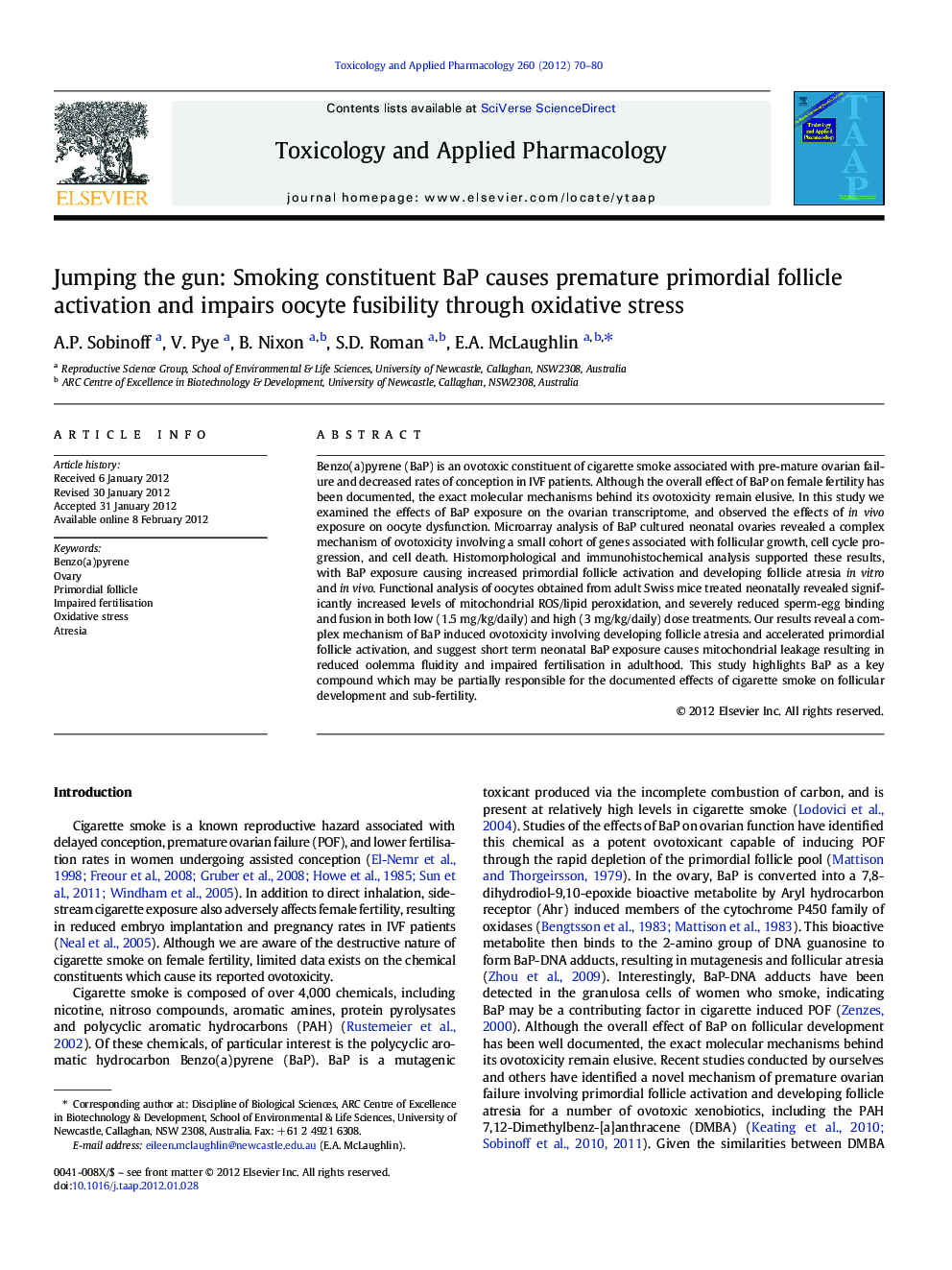| Article ID | Journal | Published Year | Pages | File Type |
|---|---|---|---|---|
| 2569306 | Toxicology and Applied Pharmacology | 2012 | 11 Pages |
Benzo(a)pyrene (BaP) is an ovotoxic constituent of cigarette smoke associated with pre-mature ovarian failure and decreased rates of conception in IVF patients. Although the overall effect of BaP on female fertility has been documented, the exact molecular mechanisms behind its ovotoxicity remain elusive. In this study we examined the effects of BaP exposure on the ovarian transcriptome, and observed the effects of in vivo exposure on oocyte dysfunction. Microarray analysis of BaP cultured neonatal ovaries revealed a complex mechanism of ovotoxicity involving a small cohort of genes associated with follicular growth, cell cycle progression, and cell death. Histomorphological and immunohistochemical analysis supported these results, with BaP exposure causing increased primordial follicle activation and developing follicle atresia in vitro and in vivo. Functional analysis of oocytes obtained from adult Swiss mice treated neonatally revealed significantly increased levels of mitochondrial ROS/lipid peroxidation, and severely reduced sperm-egg binding and fusion in both low (1.5 mg/kg/daily) and high (3 mg/kg/daily) dose treatments. Our results reveal a complex mechanism of BaP induced ovotoxicity involving developing follicle atresia and accelerated primordial follicle activation, and suggest short term neonatal BaP exposure causes mitochondrial leakage resulting in reduced oolemma fluidity and impaired fertilisation in adulthood. This study highlights BaP as a key compound which may be partially responsible for the documented effects of cigarette smoke on follicular development and sub-fertility.
► BaP exposure up-regulates canonical pathways linked with follicular growth/atresia. ► BaP causes primordial follicle activation and developing follicle atresia. ► BaP causes oocyte mitochondrial ROS and lipid peroxidation, impairing fertilisation. ► Short term neonatal BaP exposure compromises adult oocyte quality.
